M42 Test with the new RedCat 51 and the ASI071 color camera
Well, that worked pretty well for an 88% waxing moon with the ZWO ASI071MC color camera. The near-full moon and Jupiter at opposition were just far enough away to make this set up work--plus a lot of 5-minute exposures. That band of red at the top left is the tail end of the ridge of hydrogen that runs behind the Horsehead Nebula (B33). Imaging notes: 63 x 300-second subs, no filters with the ZWO ASI071 color camera cooled to 0C, William Optics RedCat 51 Apo refractor, Sky-Watcher EQ6-R Pro mount. The Orion Nebula (M42), Running Man Nebula (Sh2-279), De Mairan's Nebula (NGC 1982,M43), and surrounding nebulosity.
Posted November 24, 2023
New Camera - ZWO ASI2600MM-Pro monochrome
It's a big jump from the ASI1600MM-Pro, going from a 4/3s size sensor to an APC-C at 26MP, which requires larger LRGB and narrowband filters. They're a bit pricier, but I have decided to go all the way to 2" mounted filters (or 50.4mm unmounted), anticipating a future jump to a full frame monochrome astro camera.

Posted June 29, 2023
ASIAir Plus with the Sky-Watcher
Trying something new tonight. So far, I've only used the ZWO ASIAir Plus with the AM5 mount and my William Optics scopes. So, I'm setting up the Sky-Watcher EQ6R-Pro and the 800mm Newtonian for narrowband, and decided to try out the ASIAir with this combination of gear. It has every feature I use with NINA (my normal astro controller system), that's polar alignment, plate solving, sequenced capture, guiding, so should work well!
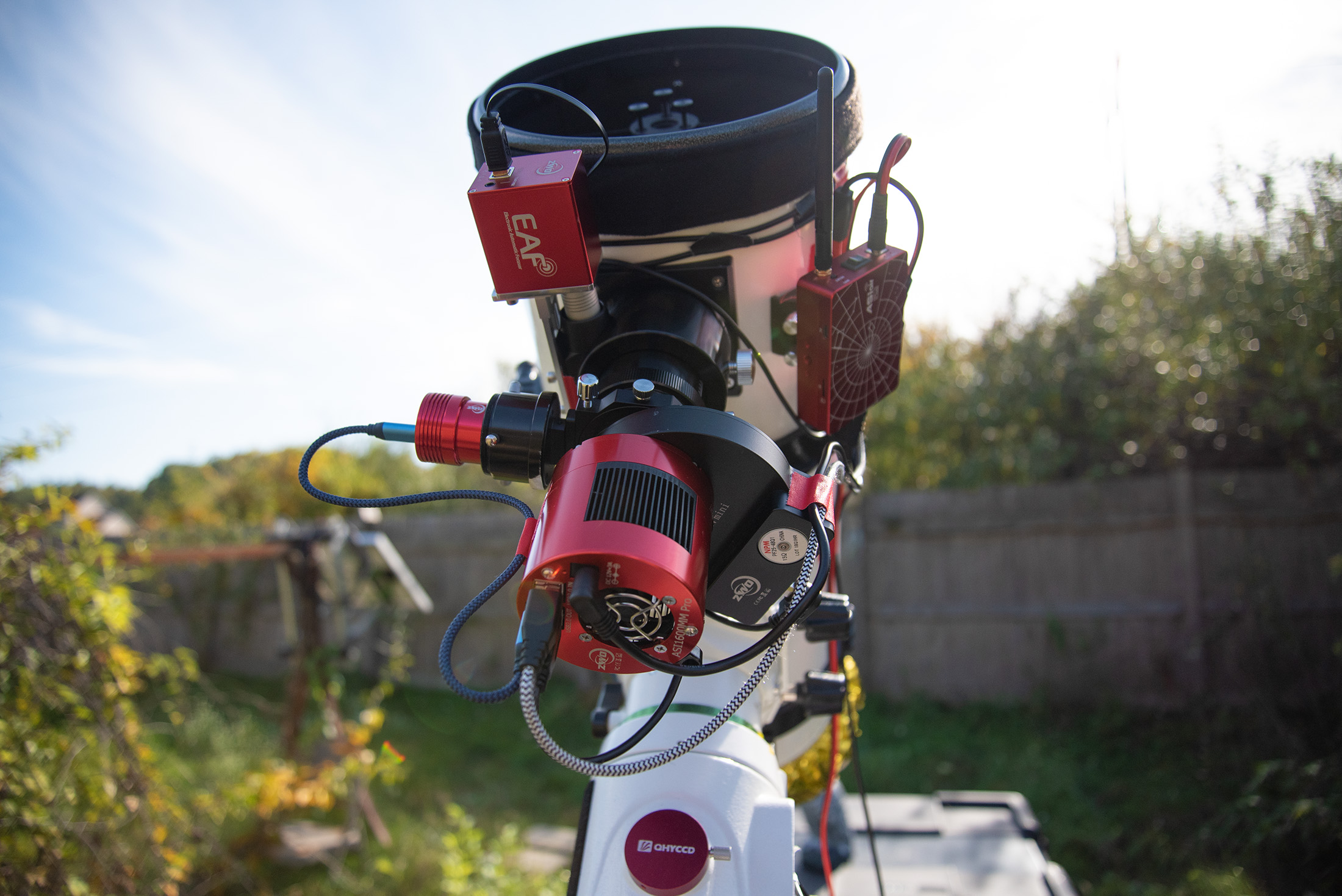
Posted October 16, 2022
Oversampling for fun and [probably no] profit
Tonight I'm testing out the ZWO ASI071 and the AstroTech RC6, with an Off-Axis Guider (QHY5iii178 guide camera binned 2x2). I've never tried this mix together, so we'll see how it goes. At 1350mm focal length this setup has a 0.73/pixel resolution. So, yeah, it's going to be oversampled. And there's also a big old gibbous moon out tonight, and the weather is not planning to cooperate. My hopes are fairly low.
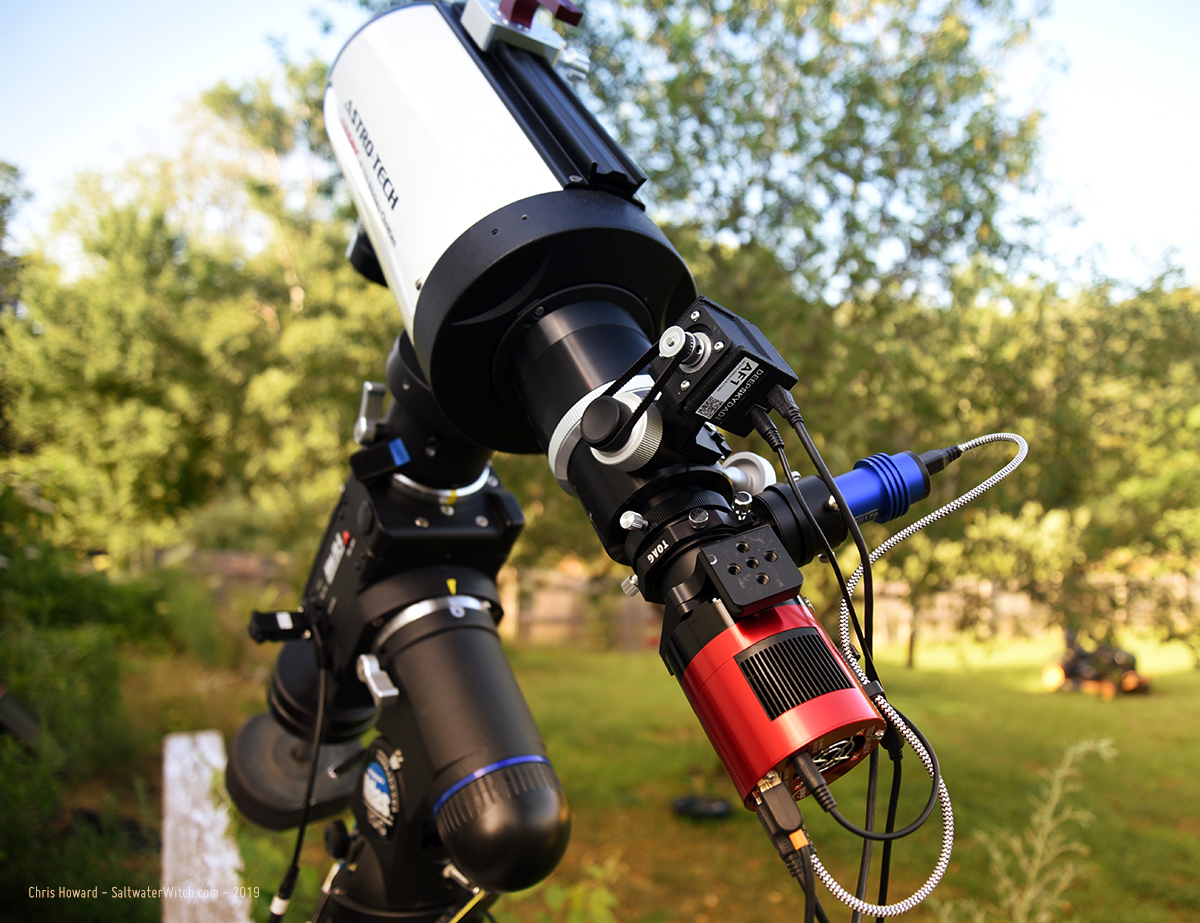
Posted July 13, 2019
Broadband color targets - Iris nebula
Yesterday I set up for a couple broadband color targets, and went with the Astro-Tech 6" f/9 Ritchey–Chrétien with 1350mm focal length. I paired the RC with the ZWO ASI071MC cooled color camera. And this is the first time I'll be using the DeepSkyDad Autofocuser AF1, which fits perfectly on the stock Crayford focuser--although you can't see it in this shot because I have the focus knobs vertical on the right site of the scope. Not using an OAG with this setup, but going with the William Optics 200mm guide scope and ZWO ASI120MM-S mono camera.
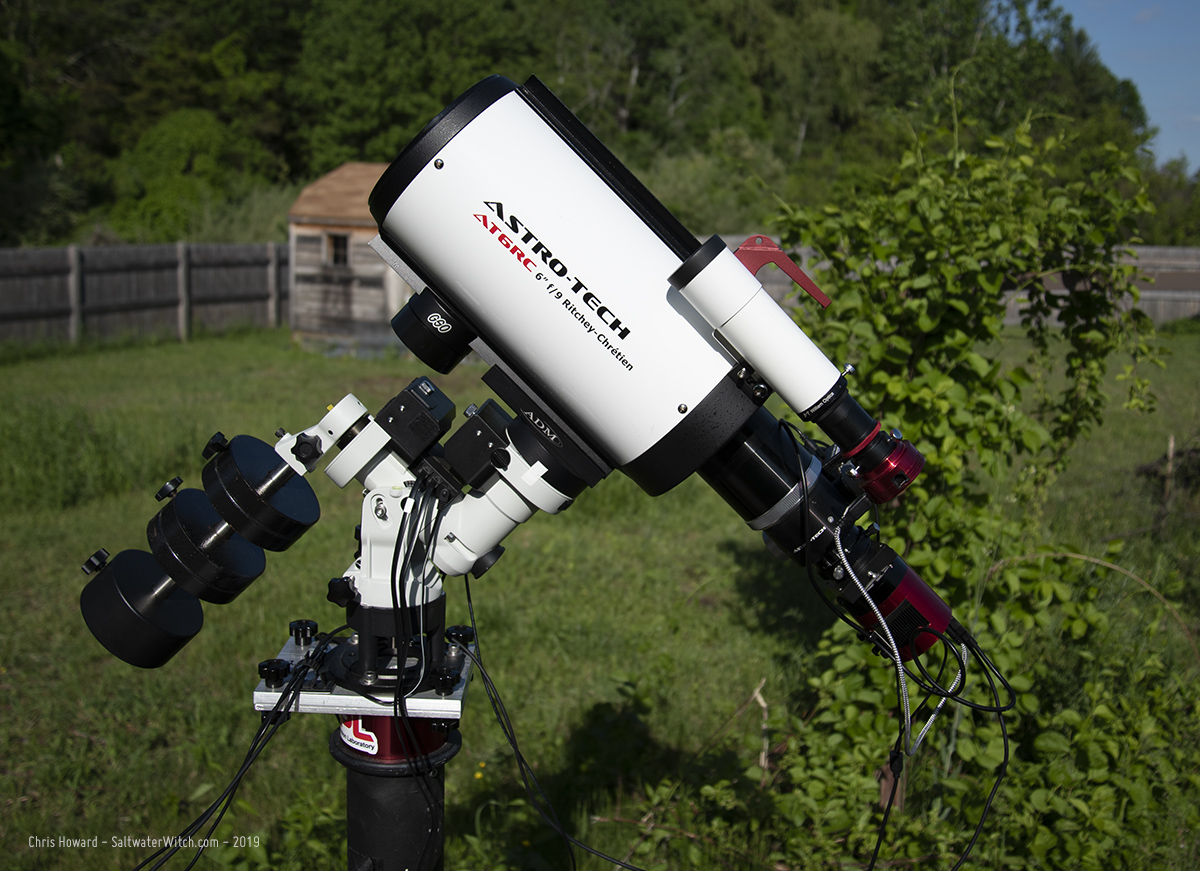
NGC 7023, Iris Nebula is a beautiful reflection nebula in Cepheus, about 1,300 lightyears away.
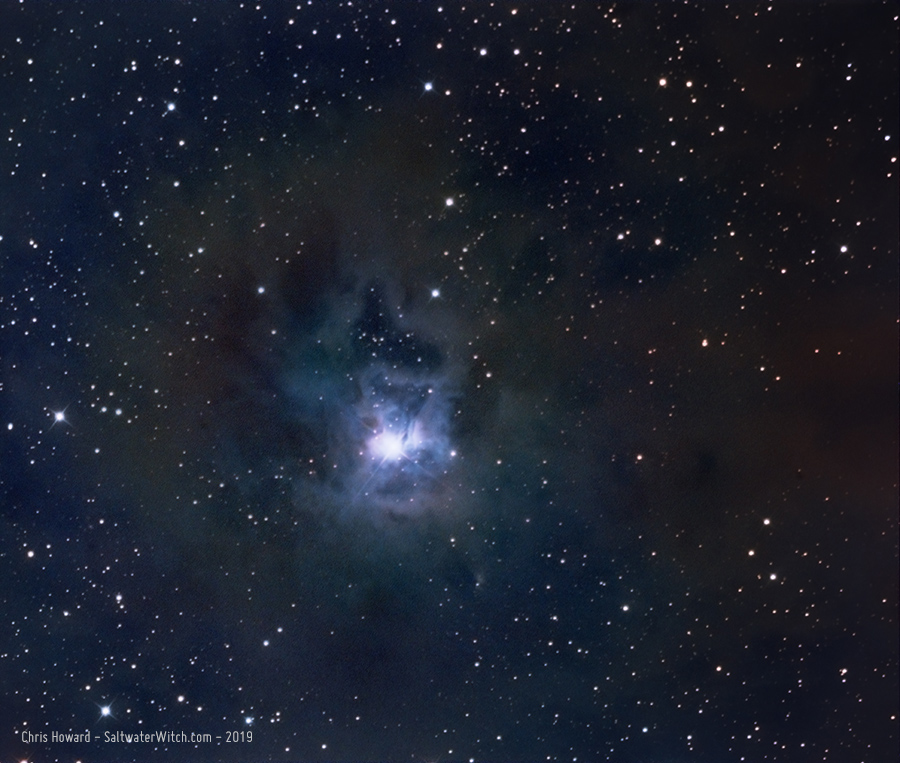
Posted June 7, 2019
Astro Session with the new ZWO ASI1600MM-Pro
Wide-field of M42, the Orion Nebula--and it's amazing how cloudy and dusty the whole area is. I spent half the night adjusting things--focus distance, off-axis guider spacing, but managed to capture M42 and the surrounding region (two sets of subs: 21 x 300 second, and 20 x 20 second for the bright Nebula core and Trapezium). Calibration frames: 20 Dark and 20 Bias, No flat frames. I shot these with the ZWO ASI1600MM-Pro monochrome camera, Astronomik 12nm Ha filter, William Optics ZS61 APO, iOptron CEM25P mount.
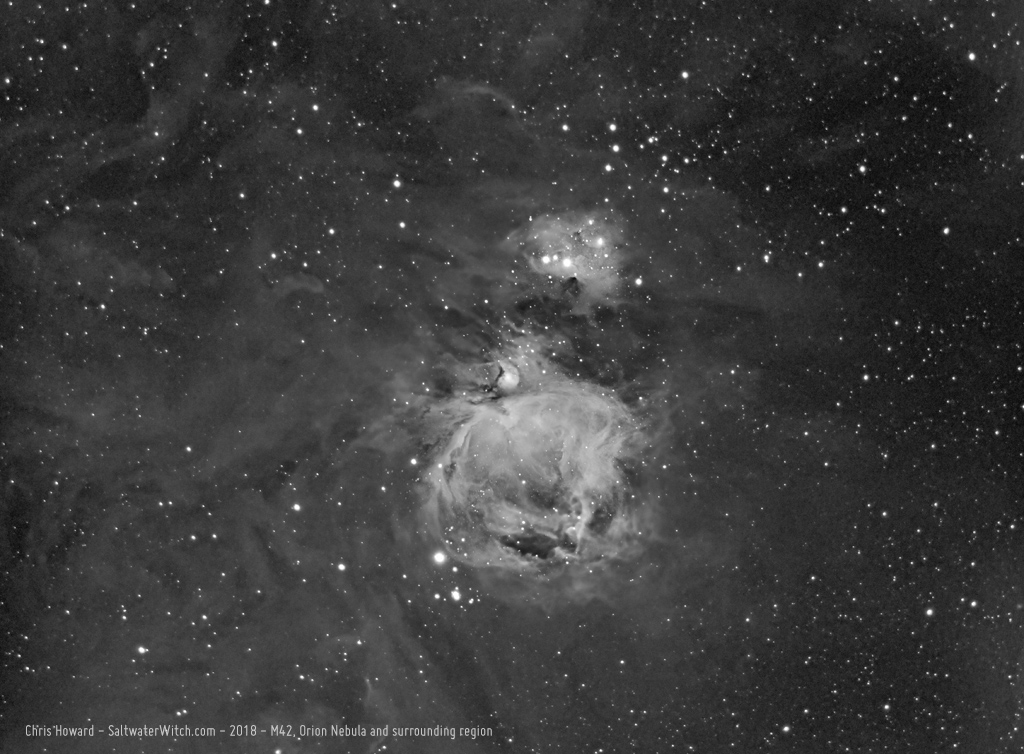
I also managed to capture a dozen frames of the California Nebula:

Posted December 26, 2018
Heart Nebula with the ZWO ASI071MC Color CMOS Camera
This one of the Heart Nebula (IC 1805) in Cassiopeia is comprised of 27 x 600 second exposures, taken over several nights, with the ZWO ASI071MC and the William Optics GT81 APO refractor, no filters, no calibration frames, stacked in DSS, processed in PSCC 2019. This is pretty impressive for a color camera when you consider the Heart is mostly made up of glowing ionized hydrogen gas and dust (perfect for narrowband imaging), and it's a relatively dim object--with the exception of NGC 896, the bright "Fish Head Nebula" at the bottom.

Posted December 13, 2018
Comet 46P/Wirtanen
I caught Comet 46P/Wirtanen in one 240-second exposure as it was passing through the constellation Eridanus. Next week 46P will pass about 7.2 million miles (0.0774 AU) from Earth, it's closest approach for the next 20 years. William Optics GT81, ZWO ASI071MC camera, Orion Atlas EQ-G


